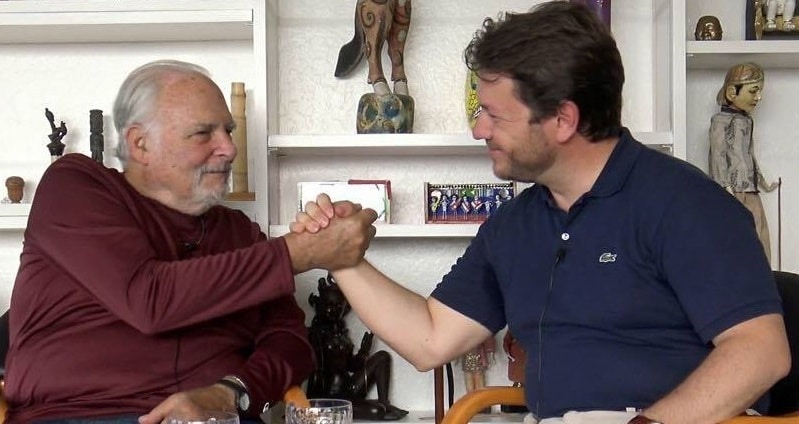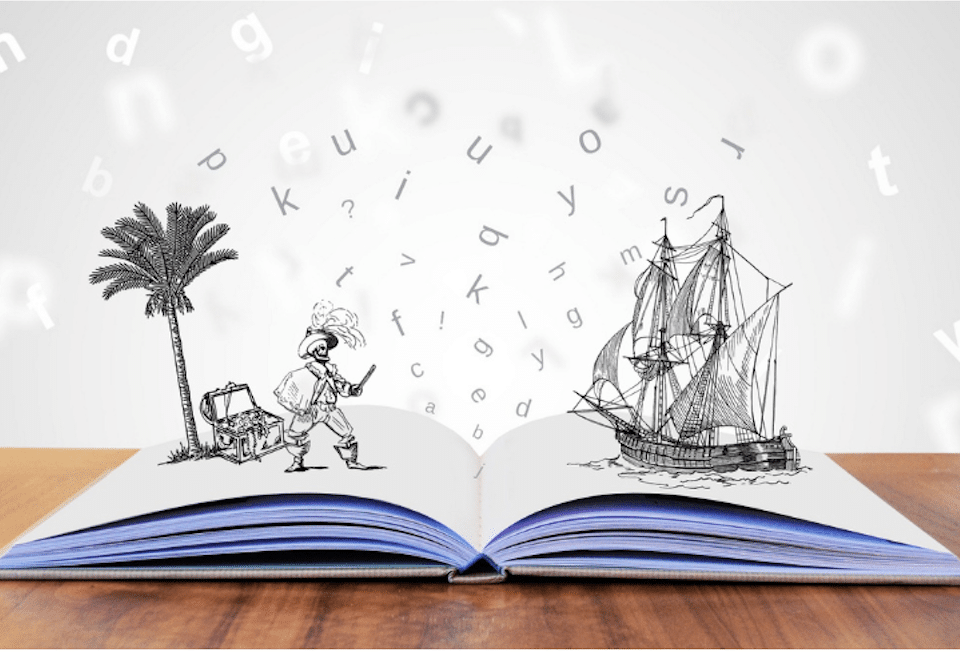
Resistance to change in organisations
22 March 2018
Losing in order to improve?
23 March 2018Article by Diego Ingrassia – “EDUCATING ON EMOTIONS”
for PSICOLOGIA CONTEMPORANEA – Limits – no. 263, September-October 2017 – GIUNTI EDITORE
;
It is always magical to fly over San Francisco Bay.
Soon we will land, it is a very cool day on the ground, actually almost cold for someone like me coming from a torrid Milan in late June. I am on my way to Paul Ekman’s house.
What you will read below is the excerpt of the interview recorded during the visit, a middle way, as on other occasions, between friendship and work, a collaboration that has been going on for several years now. Before we begin, however, I would like to introduce Paul.
Paul Ekman is Professor Emeritus of Psychology at the University of California at San Francisco.
A leading expert on the physiology of emotions, his pioneering studies on facial expressions and lying led to the discovery of micro-expressions, mimics related to emotions that arise and vanish in the space of a split second.
The television broadcaster Fox was inspired by his studies and life for the production of the television serial Lie to Me.
The Facial Action Coding System (FACS) he created is an atlas that describes all the muscular actions that occur on our face and was used in the creation of Disney – Pixar’s facial expression database, used in every animated film they have made since 1994.
Hello, Paul. As I was telling you, I contribute as an author to a column on Emotions in the journal Contemporary Psychology.
I am happy to be able to talk with you about emotions and hope that our words can inspire you to improve and gratify your life and relationships!
People who attend our certification courses in your scientific methodologies often ask me for a miracle solution to effectively manage stress.
There are professions that put a strain on people’s emotional and psychological balance.
I am thinking of those types of jobs that involve direct contact with people and their well-being: doctors, nurses, social and health workers, psychologists and therapists, but also the police, fire brigades and all those who deal with helping relationships and the safety of people.
These professionals are highly at risk with regard to Burnout syndrome.
In your opinion what tools could help them to defend themselves against this phenomenon?
I believe that Burnout is an issue that really should not be underestimated.
When we try to control our most intense emotions and somatise the harmful effects of stress on our bodies, the verbal and non-verbal signals that arise should not be underestimated. Neither by ourselves, nor by the people who work with us.
My daughter Eve has studied this phenomenon within two emblematic contexts: she has worked closely with paramedics and nurses working in the resuscitation ward of the emergency room (at San Francisco General Hospital) and with prison workers who work in juvenile prisons (i.e. JJOs, Juvenile Justice Officers).
With these professionals he worked on emotional awareness and how to recognise their involuntary non-verbal manifestation: mind and body are in fact always connected, just as emotions are to our thoughts, so small and large signals on the face or in the body emerge regardless of our will and intention.
If we learn to recognise when emotions arise within us and when their intensity becomes excessive and harmful, we can improve our overall well-being: first of all, we need to understand the origin of these intense emotions, delay our explosive actions through awareness and emotional intelligence, and finally we can learn meditative practices, such as mindfulness, that help us regain our balance.
This skill can make all the difference and help us avoid the effects of burnout.
In my opinion, emotions should be taught already at school, both to prevent problematic behaviour (bullying and conduct disorders) and to generate a virtuous motion at a social level thanks to knowledge: learning to recognise emotions will help future generations to live in harmony and mutual respect.
In Italy, we have recently started a pilot study involving some primary schools.
Our goal is to educate children about the wonderful world of emotions.
In cooperation with the Giunti publishing house, we are in fact training psychologists, educators and teachers in the use of tools and methodologies to help them manage emotions in the school environment, not only with children but also with parents.
Our recent activity with Disney-Pixar can also support us, but the animated film Inside out is only the tip of the iceberg, who knows what the future will bring?
Yes, Inside out and many other cartoons are the key to talking to children about the complex emotions that every human being experiences during his or her lifetime, through a language and modality that they like.
Parents can also benefit a lot from watching these multimedia contents with their children.
Emotions exist and always influence our behaviour.
Therefore, it is necessary to create competence in young people, because it is on them that our future will depend. We adults have an obligation to provide them with as many tools as possible to make their lives easier and extraordinary.
Always with respect for themselves and others. ‘Compassion’ we say (‘acceptance and absence of judgement’).
Do you have any solutions to promote forms of education capable of overcoming the phenomena of bullying and cyberbullying, now a frequent and widespread practice online and on social networks?
I think that every behavioural problem can actually conceal an emotional discomfort that is not expressed or badly managed.
Being emotionally intelligent includes listening attentively, observing the other person, grasping even from small and very brief involuntary indicators what our interlocutor is feeling or trying to hide from us.
Understanding this can help to develop empathic communication capable of defusing the destructive emotions that poison relationships, and ferrying them towards more functional emotions and communication.
Verbal and non-verbal communication sends us signals, always; it is up to us to know how to ask the right questions to understand the other person’s emotions.
Paul, I am extremely fascinated by the work that you, your daughter Eve and the Dalai Lama have recently been doing: the Atlas of Emotions.
There are not only detailed descriptions of what goes on in the body, but also useful examples and strategies on how to intervene in it, as well as a breakdown into degrees of intensity of the emotions. The Dalai Lama’s knowledge is not only in the body, but also in the emotions.
Meeting the Dalai Lama was a life-changing event for me and broadened my theoretical perspective.
I had never approached the philosophy behind the Buddhist religion: I am a scientist and have always wanted to maintain a secular outlook in my description of things in the world.
When my daughter urged me to meet him at an international meeting of experts in the emotional field, I discovered a highly intelligent and deeply educated man, a friend whom I now respect and hear from regularly.
There is a bridge between evidence-based science and some Eastern meditative practices, today there is no academic wavering on this.
It is extraordinary, because the mind and emotions impact the body, and we can verify this through our scientific methodologies.
When the Dalai Lama proposed to Eve and me to develop a tool to help teachers and professionals to know and recognise emotions, I was simply honoured and enthusiastic.
His motivation has always been to help every human being become more aware of their inner experiences and he teaches how to act compassionately with others in order to achieve peace and happiness.
To develop this project he invested about $750,000, I still remember the words he used to motivate me and to express what he wanted to achieve:
“To reach the New World we need a map to navigate… similarly, a map of emotions will help us to reach a state of inner peace and tranquillity”. I knew that first of all I had to look for a common dictionary to describe emotions verbally, so that there would be validity and reliability in using a common language.
Knowing how to name emotions in the correct way, recognising them, is in itself fundamental.
So I contacted Dacher Keltner, a fellow professor of Psychology at UC Berkeley, who worked as a consultant for Disney – Pixar in choosing and characterising the characters in Inside out.
He also acted as a consultant for Facebook during the creation of its famous reaction-emoticons.
Together with him, I conducted a survey involving 149 scientists (neuroscientists and psychologists with expertise in the field of emotions) in order to find a theoretical and lexical consensus on the nature of emotions. After this survey we produced the final draft.
The Atlas of Emotions is a non-profit project to expand knowledge about emotions globally. In it we describe five major emotional families (at least for now): the Fear family (and all its subcategories), those of Joy, Anger, Disgust and Sadness.
We teach how to name them correctly starting from physiological and behavioural signals, we describe useful strategies to improve our relationships. This is still developing, but so far it has been very successful, and for that we are grateful.
As I have already confirmed to you, we will translate the Atlas into Italian so that it can also be used in our country.
At this point, when it is ready, I hope you can be the one to present it with me in Italy.
You know that I am always happy to have you as my guest.
You know, Diego, that I am always happy to return to Italy. I love the Italians, not only for the culture, the art, but above all for the relational warmth that distinguishes you and the emotions you can transmit to me.
I promise you that the next intercontinental trip will be to Italy.
With this promise, Paul greets all the readers of Contemporary Psychology. .




